#invasive insects
Text

8 notes
·
View notes
Text
““The cool thing [is that] it's called the Elm zigzag sawfly, because as it feeds, it makes a zigzag pattern in the leaves,” said Kelly Oten, an extension specialist of forest health at North Carolina State University.”
The uncool thing, I suppose, is that this is a species from Asia that may be invasive in NC.
19 notes
·
View notes
Text
Just spent the past hour running around killing lantern flies with a fly seater, the neighbors probably think I’m crazy but the environment will thank me
2 notes
·
View notes
Text

The invasion of the Brown Marmorated Stink Bug. Native to much of east asia, first spotted in Allentown, Pennsylvania in 2001.
Sauce
2 notes
·
View notes
Text
youtube
A 5-year-old New Jersey boy is doing his part to stop the invasion of spotted lanternflies... with his very own 'lanternblaster'
For more U.S. news, subscribe to NowThis News.
#lanternflies #invasivespecies #science #Politics #News #NowThis
#now this news#now this#solarpunk#invasive species#invasive bugs#bugs#insects#invasive insects#new jersey#USA#lanternflies#spotted lanternfly#Youtube
5 notes
·
View notes
Text
We need the public’s help as we work to eradicate yellow-legged hornets from Georgia. If you think you’ve seen them in your area, report sightings to https://bit.ly/45rfyCa.
📷: UGA Extension
#shirelandfarm#homestead#farm#homesteading#farmlife#gardening#garden#gardencore#farmcore#pestcontrol#pest#hornet#hornets#insect#insects#invasive species#invasive insects
0 notes
Text
Invasive Insects: Introduction
Invasive insects can be a threat to your lawn and home. In addition to disrupting or harming residential landscapes, many invasive pests negatively impact local environments if these insects spread and reproduce. Therefore, pest management is crucial to protecting landscapes and preventing these species from damaging lawns as much as possible. This article will highlight how these insects can spread and which species we will discuss in future articles.

How Invasive Insects Spread
Insects can spread in several different ways. Some species can fly long distances, while others rely on the movement of infested materials such as plants or wood products. Movement of infested materials can involve humans or animals carrying them from place to place on their bodies or clothing and through contaminated food or water. In some cases, invasive insects may be carried along with other products, such as fruit trees and lumber logs, known as “hitchhiking.” Some invasive species may even travel across oceans by hitching rides on boats.
Spotted Lanternfly
The spotted lanternfly is an insect introduced to the United States in 2014, native to China and India, that has since spread to 14 states including Pennsylvania, New Jersey, Virginia, and Delaware. The spotted lanternfly feeds on various tree species, including fruit trees like apples and grapes and hardwood trees like maples and willows. This pest leaves scars on leaves by feeding on them, which can interfere with photosynthesis. Other damages caused by the spotted lanternfly include dead shoots at the ends of branches, dieback or defoliation, reduced tree growth rates, and increased susceptibility to disease outbreaks.
Emerald Ash Borer
An emerald ash borer is a metallic green beetle that feeds on ash trees. The insect was first discovered in the United States in Michigan in 2002 and has since spread to at least 30 states. Emerald ash borer has killed tens of millions of ash trees in the United States. The wood-boring beetle infests ash trees and feeds on the inner phloem, cambium, and outer xylem, causing crown dieback, bark deformities, D-shaped exit holes, woodpecker feeding holes, and yellowing foliage.
Japanese Beetle
The Japanese beetle is an invasive insect species that feeds on the roots of turfgrasses found in home lawns, golf courses, and athletic fields. This species of beetle has a striking appearance. The head and thorax are metallic green, the abdomen is metallic green with black spots, and the legs are dark green.
Balsam Woolly Adelgid
Balsam woolly adelgids are small wingless insects that infest and kill fir trees, mainly balsam fir and Fraser fir (common Christmas trees). The adelgid feeds on the tree’s needles, causing them to turn brown, die off and fall off the tree prematurely. Balsam woolly adelgids are native to Europe and were first detected in North America around 1900. Since then, they have spread across the United States and have caused extensive damage to mature stands of balsam fir trees.
Contact Burkholder PHC for Invasive Pest Treatment & Removal
If you are concerned about invasive insects harming your landscape and want to keep your property safe, contact Burkholder PHC. We provide a free evaluation from our highly experienced, qualified plant health care experts to help remove and control various invasive insect species and any adverse effects these pests may cause. Contact Burkholder PHC today for a free consultation.
Blog is originally published at: https://www.burkholderphc.com/invasive-insects-introduction/
It is republished with the permission from the author.
0 notes
Text
Usually when there's an insect just chilling I'll leave it be, maybe take a picture and admire it for a lil. But when I see spotted lanternflies, it's like my primal urge to kill is somehow activated and I go into a murderous frenzy until their all dead. I have a 6 year old cherry sapling and It buded this year. I REFUSE to let my plant son fall to these menaces.
1 note
·
View note
Text
How Non-Native Plants Are Contributing to a Global Insect Decline
The impact of introduced plants on native biodiversity has emerged as a hot-button issue in ecology. But recent research provides new evidence that the displacement of native plant communities is a key cause of a collapse in insect populations and is affecting birds as well...
#non-native plants#invasive species#environment#conservation#insect decline#insect#insects#entomology#biodiversity#animals#nature#botany#plants#non-native invasive species
1K notes
·
View notes
Text

Bug of the Day
Spotted lanternflies are taking over my life...
#spotted lanternfly#SLF#lanternfly#invasive species#insect#Hemiptera#Fulgoridae#planthopper#Fulgorid planthopper#Lycorma#Lycorma delicatula#bug#BotD#bug of the day
284 notes
·
View notes
Photo
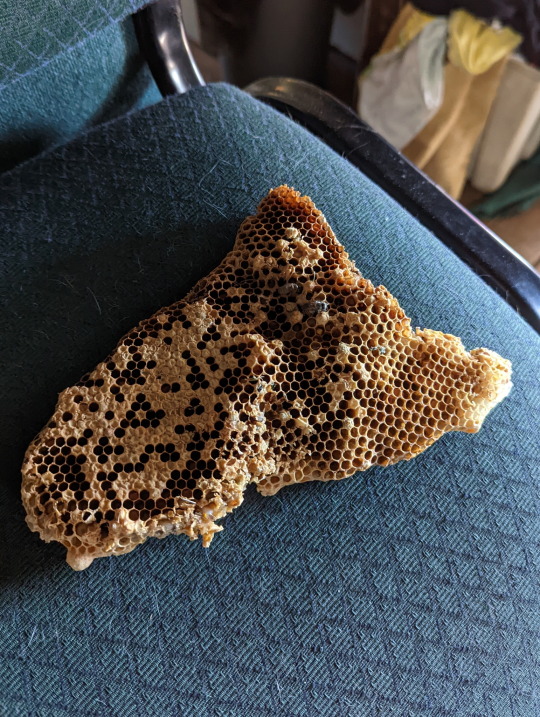
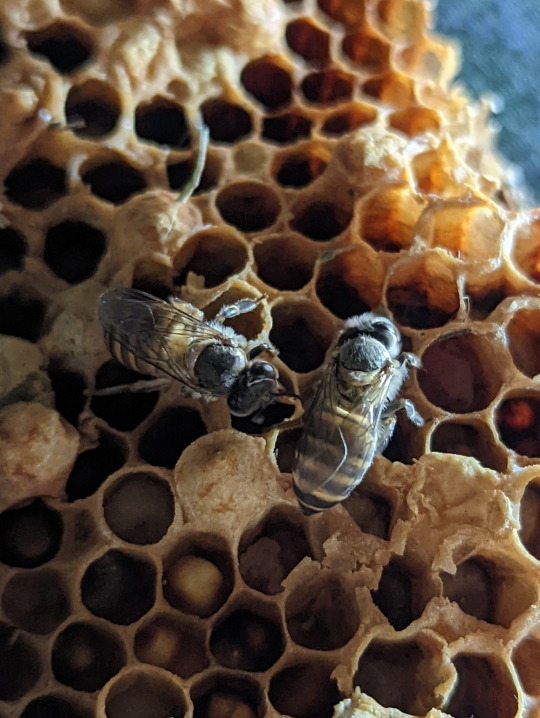
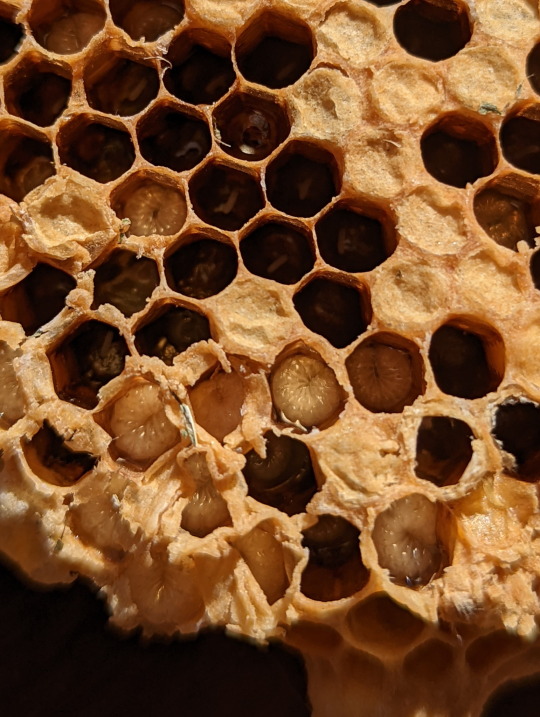
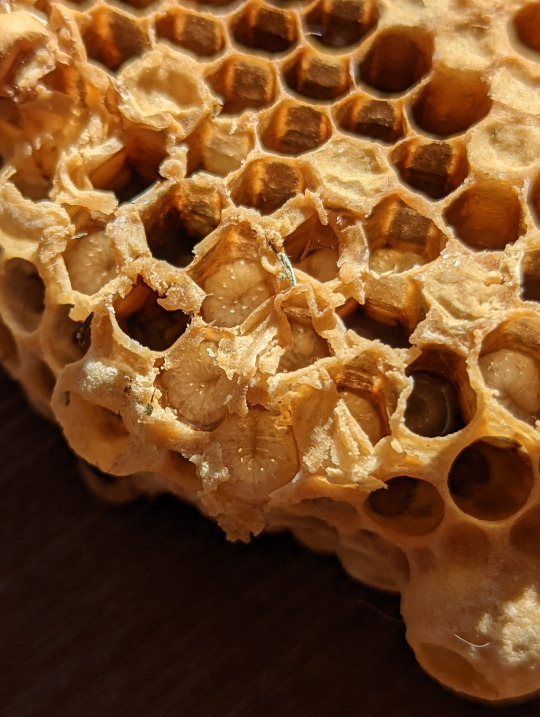
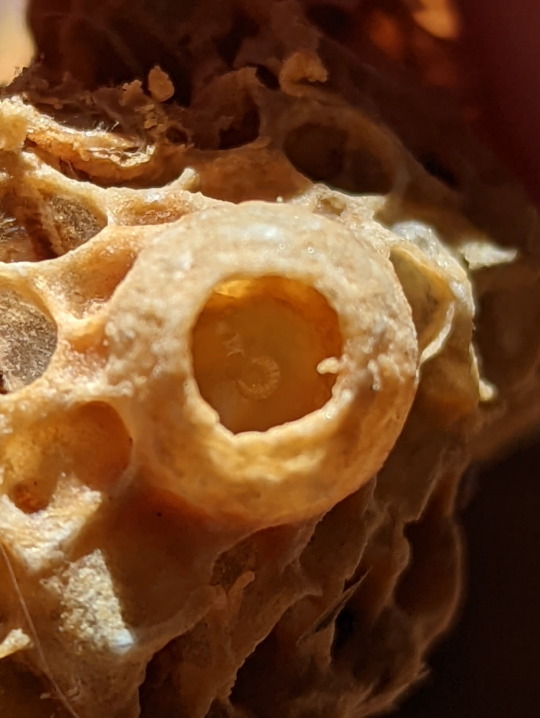


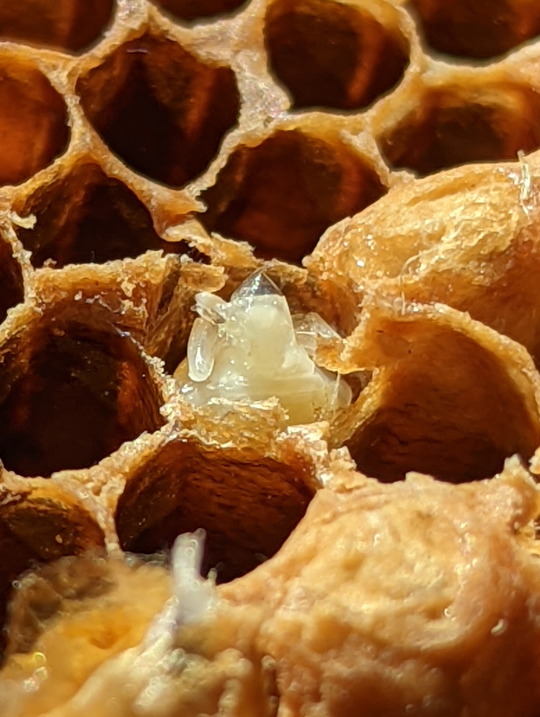
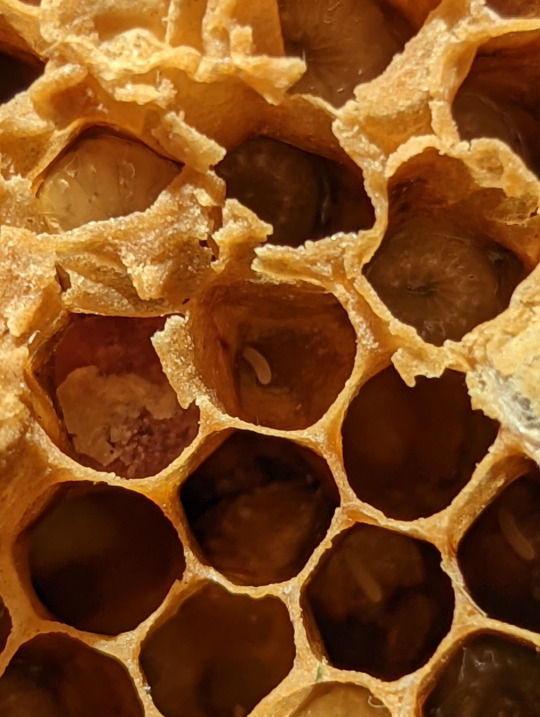
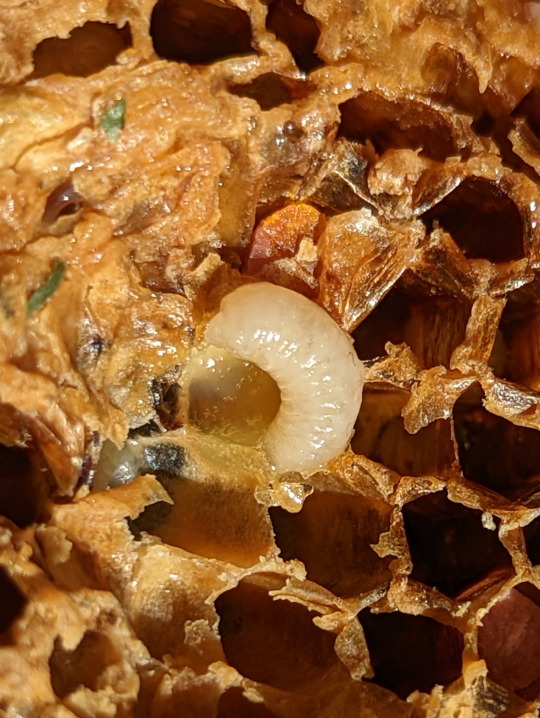
Nest of the Asian Honeybee
Here we have the poisoned nest of the Asian Honeybee (Apis cerana). If you’re wondering why the nest was poisoned, it’s because this species is actually quite damaging to this area. The Asian Honeybee not only leaves in competition with native bees over nesting areas and food, but they may also carry a certain nasty mite known as the ‘Varroa mite’ (genus Varroa), which can be detrimental to European Honeybee populations (Apis mellifera) (1).
Lets take a closer look at this nest shall we. First we’ll start off with the eggs. You can see an egg inside a brood cell in picture 9. The eggs are very small, and take about three days to develop. After which the fat little larvae emerge, curling up and waiting to be fed by the worker bees. When the larva becomes large enough, the brood cell will be sealed, so the larva’s pupation will be undisturbed. The adult bee will chew its way out of the cell after emerging from the pupae (2).
You can tell which brood cell belongs to which kind of bee based on its appearance. The drones have a distinctly dome-shaped cap with a large pour in the center (pic. 7). Then, of course, there’s the queen’s brood cell, which is large, round and on the edge of the nest (pics 5-6) (3).
When it comes to this species, it’s important to stay informed about the ways in which they are damaging for the environment.
Source (1)
Source (2)
Source (3)
Apis cerana
14/07/22
#Apis cerana#Asian Honey Bee#Apis#Cavity-nesting Honey Bees#Honey Bees#Apini#Anthophila#Bees#Hymenoptera#Varroa#Varroa Mites#Acari#Mites#invasive species#bugs#bugblr#bugs tw#bug#insects#insecta#insectblr#insects tw#entomology#insect#Arthropods#Arthropoda#beehive#hives#nests#invertblr
598 notes
·
View notes
Text


If you live in the northeast United States, then you’ve probably seen or at least heard of these guys. The Spotted Lanternfly. Or Lycorma delicatula.
They’ve been rapidly expanding and growing in population and while their presence is too new to know the exact impact they have on our native flora, they seem to pose a major threat to the apple and grape industries. They also excrete a honeydew that leads to mold growth on the plants they feed on.
So the states have put out this message to the public: “If you see it, smush it.”
And while I understand the need to be ruthless in invasive species response, I hope that people aren’t associating all lanternflies with this “bad bug” label.
So right now I’d like to showcase some cool/interesting species of lanternflies (the family name is Fulgoridae) in their native habitats :)

Peanut-Headed Lanternfly (Fulgora laternaria)

No Common Name (Phrictus diadema)
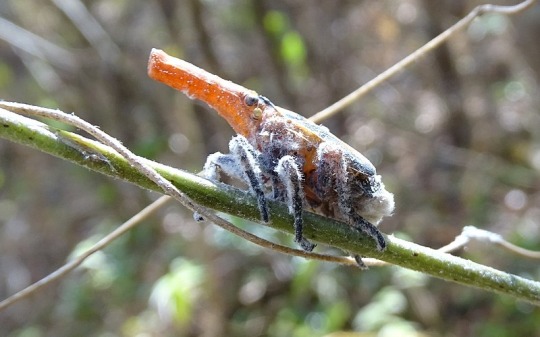
Malagasy Lantern Bug (Zanna madagascariensis)

No Common Name (Pyrops delessertii)
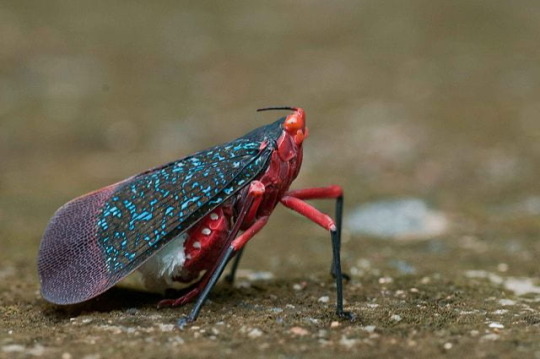
No Common Name (Kalidaysa lanata)
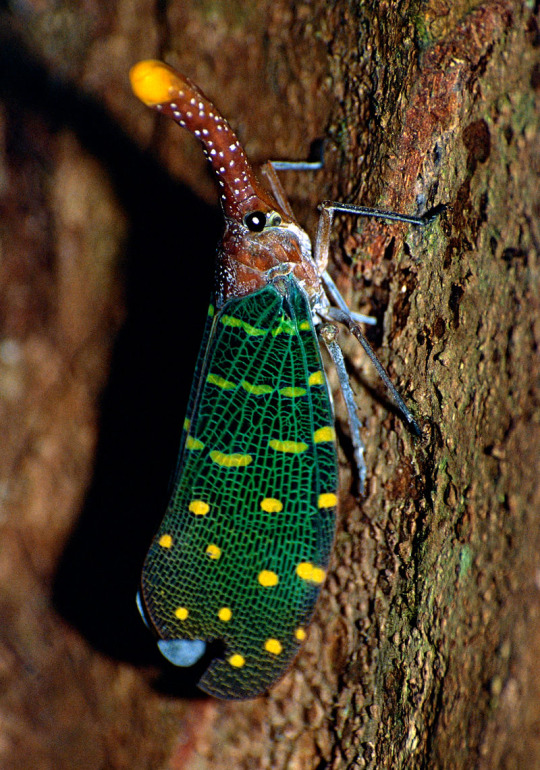
No Common Name (Pyrops intricatus)
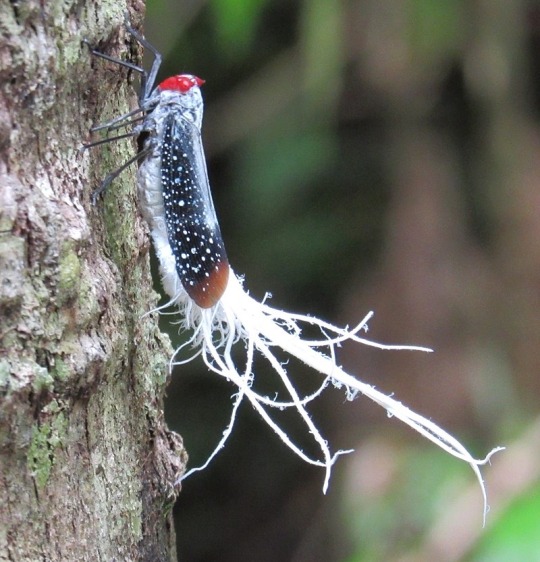
Wax-Tailed Planthopper (Lystra lanata)
Fulgoridae has over 500 species making it a fairly large hemipteran family, please go on a Wikipedia dive to look at all of them. Happy bugging :))
#insects#entomology#bugs#lanternflies#spotted lanternfly#bugblr#planthopper#ecology#invasive species#hemiptera#pretty pretty bugs#i love them all
157 notes
·
View notes
Text
What Are Mosquitoes Good For?
Originally posted at my blog at https://rebeccalexa.com/what-are-mosquitoes-good-for/
Now that the weather has cooled down over much of the United States, insects have died back or gone into hibernation for the winter. So you may be tempted to be glad that the mosquitoes have disappeared for the time being. Maybe you even wish they wouldn’t come back next year! After all, they’re just mosquitoes, which annoy us and spread diseases, right? What are mosquitoes good for, anyway?
Much to the surprise of a lot of people, they actually have some pretty important ecological functions, and your local ecosystem would likely suffer if the mosquitoes were all exterminated. So today, I am going to be a mosquito apologist.
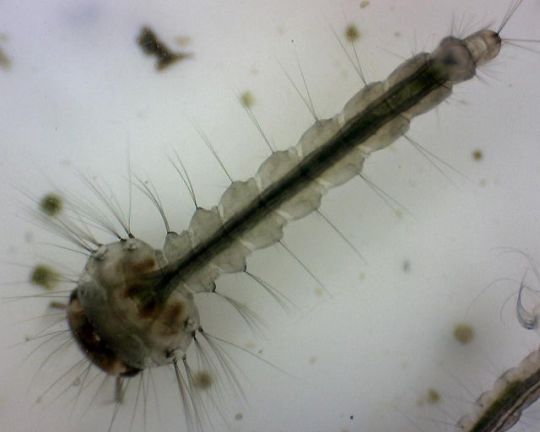
What Are Mosquitoes Good For? Food!
You may have seen hundreds or even thousands of mosquito larvae swimming in a pond or other fresh water. Perhaps you thought every single one of them came to find you after they became adults! They certainly are prolific; some species can lay as many as 300 eggs at once.
But this isn’t just because they want to have more young to annoy you, generation after generation. Rather, it’s because a lot of mosquitoes end up eaten before they even get a chance to reproduce. As eggs and larvae, they’re food for fish, amphibians, and aquatic insects and other arthropods. Once they take to the wing, birds and bats become major predators, as do adult dragonflies and other winged insects, plus spiders that catch them in their webs. While a single bat might not actually eat 1000 mosquitoes in a night, all those various predators do take a significant chunk out of the mosquito population.
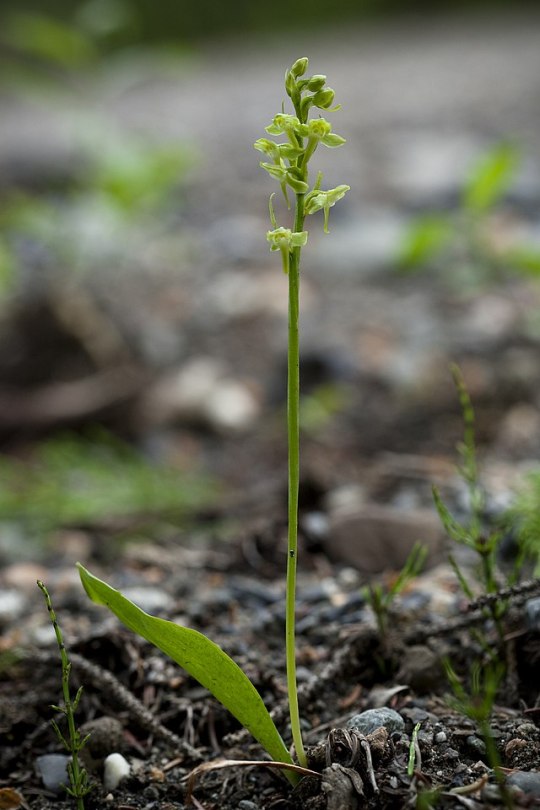
Platanthera obtusata is just one of many orchids that rely on mosquitoes for pollination.
What Are Mosquitoes Good For? Pollination!
Believe it or not, most mosquitoes aren’t out for your blood! The majority of mosquito species are entirely vegetarian; it’s only a few in which the females seek out blood to help produce eggs. Most mosquitoes drink nectar or plant sap, and in the pursuit of the former they play a vital role in pollinating the flowers they visit. Goldenrod and orchids are just two examples of groups of plants pollinated by mosquitoes. And while mosquitoes might drive Alaskans buggy, they are vital for pollination during the short Arctic summer.
What Are Mosquitoes Good For? Keeping Things in Check!
Mosquito larvae spend anywhere from a few days to a few weeks in the water where they hatched. They feed on a variety of bacteria, algae, and other microorganisms. Because they have a lot of growing to do, and need to prepare for their final molt to adult form, they have to eat a lot! That means they help keep their prey species’ populations in check. An overgrowth of algae, for example, can reduce the amount of sunlight that submerged plants have access to, and as the algae dies it increases the amount of nitrogen in the water. By constantly grazing on algae, mosquito larvae are helping to prevent these sorts of ecological imbalances.
What If We Made Mosquitoes Go Extinct?
So what are mosquitoes good for? Quite a lot, apparently! However, there’s no denying some species have also caused us a lot of grief. There have been calls to exterminate all mosquitoes, or at least every species that could ostensibly cause us problems through disease transmission. And to be sure, I don’t want to see people dying of malaria or West Nile virus, especially as these diseases often hit disadvantaged populations harder, with fewer resources for treatment. But it’s something where we need to weigh the consequences carefully.
What would happen if there were suddenly no more mosquitoes? Sure, the animals that prey on them could potentially find other sorts of food, but there would be an upset in the food web as the predators put more pressure on remaining prey species, which could lead to some of those species become locally endangered or even extirpated. Or the predators might drop in number as they failed to find enough food. Either way, getting rid of all the mosquitoes would have a negative impact on the food web.
Finally, and possibly most importantly–we may not fully understand the ecological roles mosquitoes have. As I wrote recently, ecosystems are incredibly complex networks of relationships among thousands of species, and for centuries we have been eradicating entire species without any thought as to what long-term effects their loss might have on their native ecosystems.

However, that brings up another point: the fact that there are invasive mosquitoes. Invasive species wreak havoc on ecosystems they’re introduced to, and it just so happens that one of the most notorious disease-spreading mosquitoes, Aedes aegypti, is invasive across much of the tropics, as well as subtropical and temperate areas worldwide. Spread through the slave trade, this mosquito is a prime vector for yellow fever, dengue fever, Zika, and several other pathogenic diseases affecting humans. Its cousin, Aedes albopictus, is also a disease vector and is more cold-hardy, meaning it could spread even further.
What’s the answer? Well, historically people just drained wetlands, much to the devastation of the native ecosystems there. More recently, the widespread and indiscriminate use of pesticides like DDT also knocked back mosquito populations (at least temporarily), but also killed off many other animals both directly and indirectly, to include nearly wiping out multiple raptor species due to eggshell thinning. Moreover, mosquitoes have developed resistance to pesticides, making them a less useful tool overall.
More recent innovations to control specific invasive mosquitoes hold some promise. A. aegypti, for example, has been genetically modified in labs to create a strain known as OX513A. Not only do the offspring die before they can reproduce, even if a OX513A breeds with a wild mosquito, but the offspring also apparently lack resistance to some pesticides. Biological control using Wolbachia bacteria inhibits A. aegypti‘s reproduction, and also makes them unable to carry certain diseases such as Zika and dengue fever.
So it would appear that the fight to control invasive species also has the bonus effect of stopping the mosquitoes most likely to give the rest a bad name.
Did you enjoy this post? Consider taking one of my online foraging and natural history classes, checking out my other articles, or picking up a paperback or ebook I’ve written! You can even buy me a coffee here!
#mosquito#mosquitoes#insects#invertebrates#arthropods#wildlife#wild animals#animals#entomology#biology#ecology#invasive species#nature#natural history#bugs#long post#environment#environmentalism#conservation
822 notes
·
View notes
Text
There is a very large bee-like creature trapped in my ceiling right now and I do not know what to do about it
It walks over the flourescent light covers once in a while then disappears behind the ceiling tiles
What are you. How did you get in here
How do I get you out without killing you or being stung
Fuuuuuuck
#we had a nest of carpenter bees in our outer wall a few years back and had to have it removed because they were damaging the house#i am terrifed that this is a queen looking for a new nest#but what weirds me out is it's just one? don't they usually travel in like. swarms?#i am not educated enough on bees for this#bees#bugs#insects#mod post#i have homework i cannot be dealing with bee invasion rn
298 notes
·
View notes
Photo

@still-an-uniroic-fangirl submitted: not a great picture but this moth (?) found in [removed] (please remove location) has patches of scarlet under its wings only visible when it flies. i’ve only ever seen one or two
It’s a spotted lanternfly, which is invasive. Check your local agricultural or wildlife or natural resource department websites to see if they’d like you to report sightings. Usually it’s a simple online form. But it may depend on which county you live in and how established they are or aren’t there already.
REMINDER: Negative comments about bugs on my posts will get you blocked. Keep them to yourself.
136 notes
·
View notes
Text
You know I think it's as important to teach basic compassion for animals as it is teaching about invasive species. There's this video of some person stomping on a lantern fly and then setting it on fire and idk maybe you don't actually care about the ecosystem or whatever you just want some justification to be cruel to animals you deem disgusting and useless but that's just me
#shortext#animal cruelty#if people talked about those fuzzy cute invasive species the way people talk about insects and sparrows theyd get torn to shreds#because yall are massive hypocrites#'but cats and foxes are cute can't we leave them to decimate the australian bird population 🥺' die#like the moment someone suggests culling species that are conventionally cute people go fucking rabid
115 notes
·
View notes